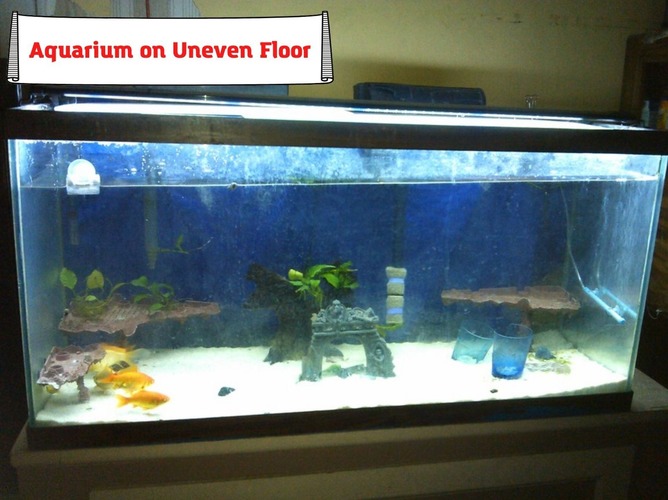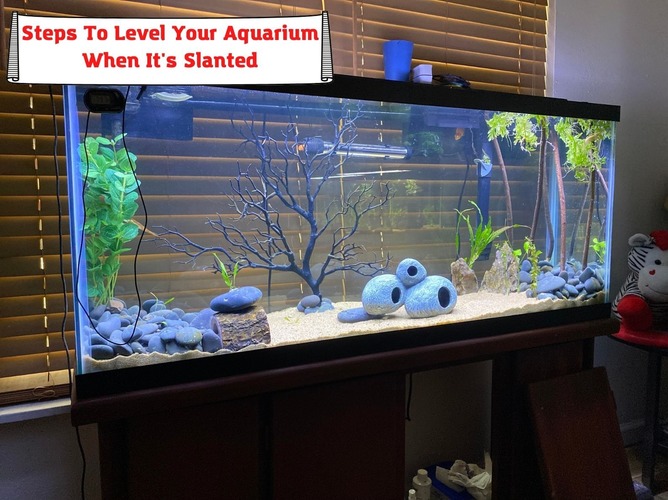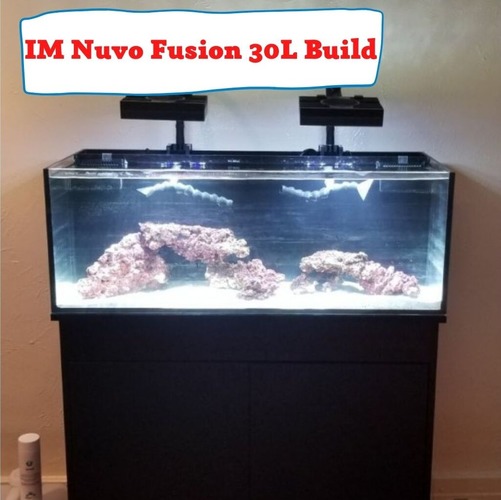
Sometimes when we get an aquarium, we find how one side of the tank seems more slanted than the others. Many aquarium tank owners face this problem, and to solve it, they use heavy objects such as books or pieces of wood to adjust their tanks.
This fix is just a quick answer and is unlikely to last long. It’s also dangerous if you would have to adjust the objects repeatedly. Why? Well, apart from all the effort, you’d be more prone to accidents.
This is why this article will share some factors that will help you balance your uneven fish tank and answer some crucial questions that you may have in mind.
What’s the Difference between Uneven and Unlevel floors?
As similar as they sound, these two words do not mean the same thing for your aquarium.
Uneven floors are sag with a slight fall – like a slope. They always have one side of the tank that is higher or lower than the rest. This makes the weight of the whole tank more focused on one side of the tank.
An Unlevel floor focuses more on the density of water, which is deeper at one end than the other.
In both cases, the pressure from the water can make the plane crack or the seam to let go. This fall-through may start with slow leakage and will gradually lead to rupture.
What’s The Problem With Uneven Floor?
One of the most critical decisions for an aquarium holder is to decide the best place to keep their fish tank.
Apart from the aesthetics, placing your tank can have a massive impact on the well-being of the fish inside.
It could also lead to the tank getting damaged, wearing off, or someone knocking unhygienic contents inside it by mistake. Or, placing it in the wrong place could even lead to the tank and its content sliding off its surface.
Why is there a Difference in Opinion?
When buying a pre-made aquarium, mostly the instructions with them specifically ask you not to place anything between the fish tank and its stand.
Customized aquariums ask you otherwise.
Then there are stand specifications to be considered. Was the aquarium stand custom made for the aquarium floor? Did it come together as a set, or did you buy it separately?
Each manufacturer, custom or standard, will have a different viewpoint to support their interest. But you need to ask yourself: What’s best for your aquarium? Is your fish tank off-level?
Here are a few steps to consider to see if your fish tank is uneven and set it.
Steps To Level Your Aquarium When It’s Slanted

Check and Determine the level
This step initiates the first phase of balancing your aquarium floor: determining whether the unevenness is an aquarium problem or a supporting surface problem.
When It’s The Aquarium:
If it’s an aquarium problem, you need to see where your aquarium is uneven. Is it slanted from the up-front or the downside of the tank? Is the center raised?
These questions will help you determine what adjustments your aquarium needs to have a leveled floor.
When It’s The Supporting Surface:
If it’s the supporting surface that’s an issue, you need to check it closely. Identify the problem. Is the surface supporting the aquarium outside secure and flat?
This place should also be hard enough to support the aquarium’s weight because the tank is likely to be heavy. Even a tiny tank holds approximately more than sixty to seventy pounds of water inside it, and then there’s the weight of the gravel, the tank, and any decorations inside it for you to consider. That’s a whole lot of weight!
You can do this with the use of a spirit.
Place it on top of a full tank. If the spirit is off-balance at any side, it indicates that your fish tank needs some leveling.
Get Ready To Adjust the Aquarium’s Level
After you know where your aquarium has an uneven floor, the second step is fixing it with the help of a rim or aquarium leveling kit.
For this to work for a rim leveling kit, you need to insert something like a tire on all three flat edges equally so that you can quickly open and use the leveler.
(You would need to push the leveler between the supporting surface and the tank if you’re using an aquarium leveler).
Apply consistent pressure on the leveler as you push it downwards, closer to the tank. (This is tricky, so make sure not to get hurt).
Set the Aquarium once and for all
When you’re done preparing, it’s time to set the tank. First, place it near the supporting surface, on its bottom rim – it’s sturdier and is less likely to break. Then maneuver it. For this part, use something flat to lift the aquarium from one side, so it’s easier for you to operate it smoothly.
For a rim leveler, you’d have to place the edge over the leveler. For an aquarium leveler, you would have to put the tank’s bottom rim on top of the leveler.
Please take caution and take things slow as you move the aquarium for balance.
Word of Caution
- Make sure to protect the glass around the leveler during this process. Using duct tape may be a way to keep it safe while making these adjustments, so wrap it multiple times before you begin.
- Also, using a leveler can be difficult. This is why it’s recommended that you read the instructions given with the leveler set before you start using them. You might even learn some new tips and tricks to make the whole process easier.
USEFUL FACTS AND QUESTIONS

Can I clean an aquarium on a slanted surface?
Sure. The process to clean is similar to any other aquarium you’d have. But, because this aquarium is slanted, you need to be extra cautious.
It’ll be more problematic for you to clean and maintain the tank this way because of the slant. The water and the fish may slosh out. The aquarium may slide off, and again, you may find it hard to open the lid because of the unevenness.
Where should I place the aquarium?
The ‘where’ is just as necessary as the shape of the supporting surface. The best place to keep your aquarium is the place where it’s the safest:
- It would be best to be mindful of any points that deliver electricity or use electricity and keep your aquarium far away. Water is, after all, a good conductor.
- The aquarium should not be near the door, on the ground, or near any speakers. All of these things can negatively affect the health of the fish and the tank.
- You should not place your tank up in the center of your room. It looks amazing there, but it’s also more prone to any accidents happening in the middle. Find a safe side to give it some support and coverage.
- Direct sunlight and any radiation source or changes in the temperature can also be something for you to consider before you decide to place your aquarium on a flat supporting surface.
- Keep it close to the water supply because you’ll have to make regular clean-ups. The closer it is to your water source, the better.
What should I look for in the Supporting Surface?
Besides how flat the surface is and where it is located, you would also have to consider its size and how much weight it can carry easily. This calculation needs to support the aquarium’s weight, so you should make a reasonable estimate of how heavy your aquarium is and if the stand or any other supporting surface is robust enough to pull it off.
Even though it’s unlikely, aquariums can skid off if not done right. This skidding off will cause substantial structural damages to your floor and tank because of their weight when they do fall!
Should I place my aquarium on the ground?
This solution would have been an intelligent answer, but it’s not recommendable. It makes it easier for contents to get into your tank. And if you have other pets in your house, they may consider your fish a toy or a treat and may dive into.
Final Words
Finding the perfect leveled place for your fish is something you, as the owner, are probably really concerned about. After all, it’s about the safety of your fish and its health.
But, you must be well prepared before you set off and start leveling your tank. It can be dangerous and result in injury if you rush into it.
Or you may place the aquarium in a place that you don’t like in the future (huge tanks are hard to move!).
So take your time. Don’t rush into it, and if you feel like you could use some advice, don’t hesitate to contact a professional for any consultation.
- Turtle Eats Fish—Why? And How Can You Stop This? - March 23, 2022
- Can Turtles Eat Broccoli? Learning about the Turtle’s Diet - March 16, 2022
- Tank Size Question. 75 vs 90 Gallon Aquarium for Your Home - January 20, 2022




